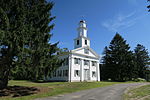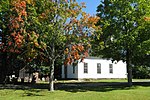Lake Wyola
Lakes of Franklin County, MassachusettsReservoirs in Massachusetts

Lake Wyola is a lake located in Shutesbury, Massachusetts, United States.
Excerpt from the Wikipedia article Lake Wyola (License: CC BY-SA 3.0, Authors, Images).Lake Wyola
Locks Pond Road,
Geographical coordinates (GPS) Address Nearby Places Show on map
Geographical coordinates (GPS)
| Latitude | Longitude |
|---|---|
| N 42.501666666667 ° | E -72.436666666667 ° |
Address
Locks Pond Road 387
01072
Massachusetts, United States
Open on Google Maps










